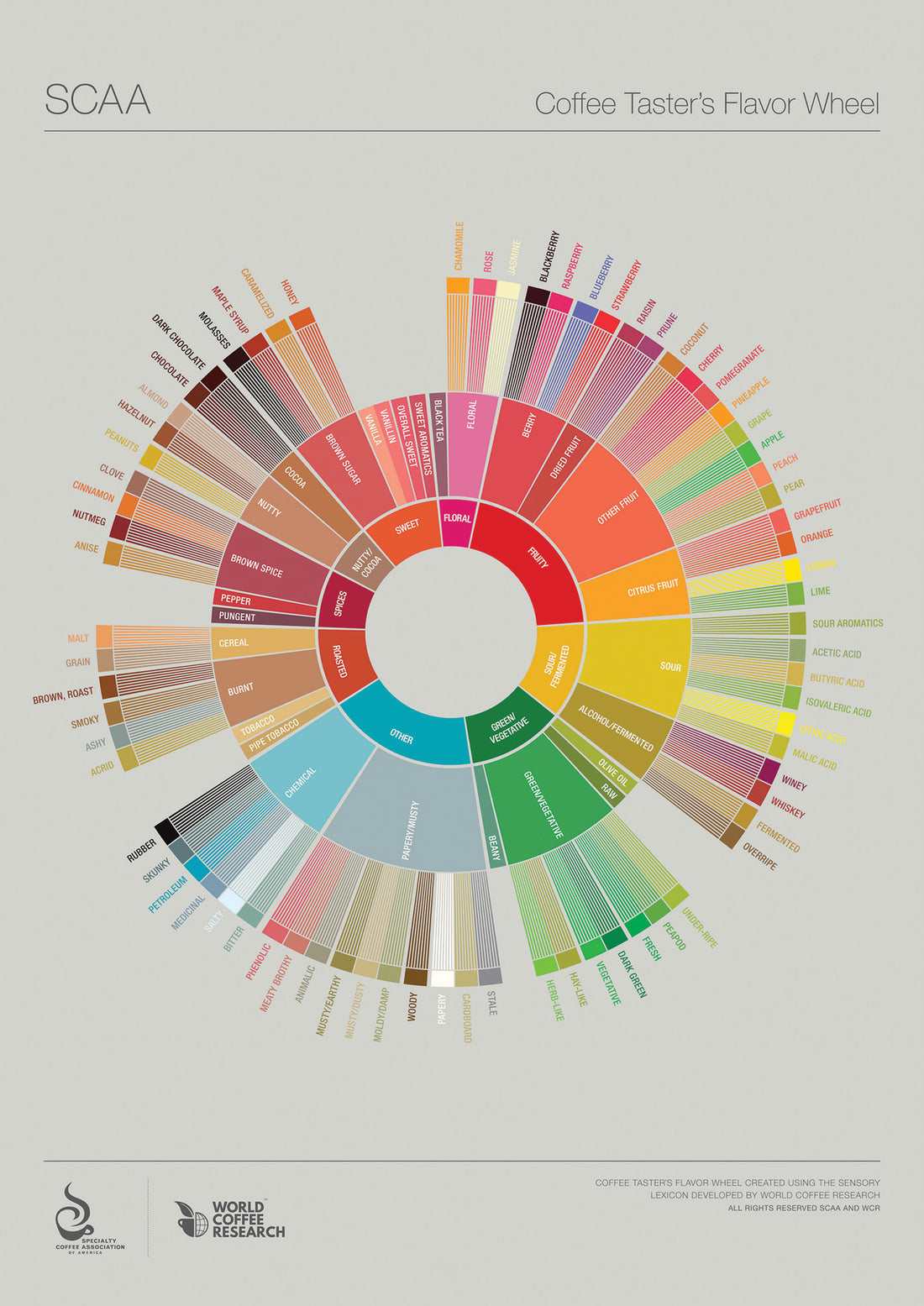
COFFEE FLAVOUR PROFILES
Share
If you are here, it's because you are a coffee lover. If so, you've probably developed a deep connection with the sensory wonders of this delightful beverage. But here's the fascinating part: assessing coffee can be a bit of a head-scratcher due to its highly subjective nature. Believe it or not, you and your spouse might have completely different opinions about the attributes of the same cup of coffee, and guess what? You could both be right!
Let's dive into the multitude of factors that influence the mesmerizing flavours of coffee. Picture those tiny brown beans. They contain not just a few, but hundreds of chemical and organic compounds, and scientists are constantly uncovering even more. With such complexity, it's no wonder our taste experiences vary. The genetic makeup of a coffee plant plays a significant role in shaping its flavour, as does the soil it calls home and the type of water it eagerly absorbs. But wait, there's more! After the beans are harvested, various factors like fermentation practices and other processing variables contribute to the unique flavour profile of each coffee. And brace yourself for another twist: even within the same coffee variety, each plant responds differently to these factors. That's why many coffees are a blend of different local groups of plants or even sourced from diverse regions and countries.
Now let's embark on a journey through the realm of sensory science. Brace yourself for a surprise: coffee research has lagged behind its vinous counterpart by several centuries, only gaining significant momentum a couple of hundred years ago. But fear not, the coffee world has caught up! Around two decades ago, the Specialty Coffee Association of America (SCAA) created the first-ever Coffee Taster's Flavour Wheel, mapping out the intricate flavours of coffee. And in recent times, World Coffee Research (WCR) took the lead in coordinating the largest coffee research project to date. The result? The WCR Sensory Lexicon, is a treasure trove that identifies a whopping 110 flavour, aroma, and texture attributes of coffee. Building on this progress, the SCAA also updated its Flavour Wheel (check out the picture below). These developments bring us one step closer to objectively assessing coffee, helping us better understand our personal preferences and enabling adjustments in production and purchasing accordingly.

Now, let's delve into the intriguing process of cupping. A Q-grader is a trained coffee cupper who assesses coffee according to the Specialty Coffee Association (SCA) standard, involving procedures, vocabulary and even specialist evaluation forms. The Q-grader exam and license are obtained from the Coffee Quality Institute (CQI), a non-profit coffee organization that creates and operates the Q-grader exams and certifications. Alejandro, who has the Arabica Q Grader certification from CQI (Coffee Quality Institute), applies the structured format that takes quality graders through the entire flavour journey of the coffee, from the initial assessment of fragrance and aroma to evaluating flavour and aftertaste, acidity and body, and finally analyzing uniformity and potential defects. It's a thorough examination that results in a detailed flavour profile analysis. It's like a scientific-tasting adventure!
But what does this mean for you, the coffee drinker? Well, it's actually quite empowering. Knowing that quality graders put so much effort into developing and accurately representing the flavour profile of your coffee allows you to dive into the intricacies of your brew. You can choose how much attention to detail you want to give when you taste your coffee. It is for sure, fun to try to distinguish floral or fruity, maybe even a little bit trickier Rose or Strawberry.
I hope you have fun with the SCAA Flavour Wheel while you enjoy your next cup of coffee.
Adriana
